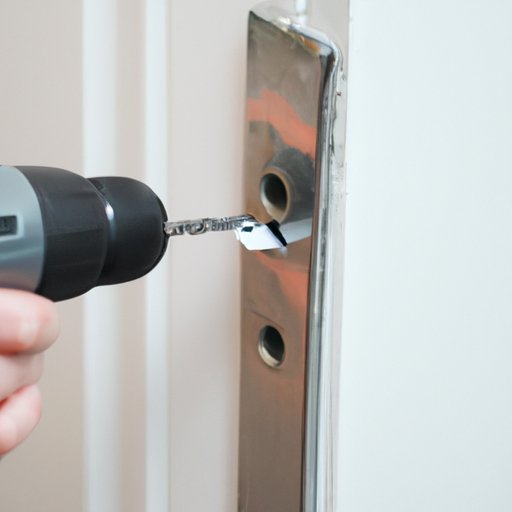
How to Open a Locked Door: Tips and Tricks
Frustration can arise when you’re locked out of your home, car, or office due to a lost or misplaced key. It’s a common problem that can happen to anyone at any time. However, knowing how to open a locked door can save you time and money on locksmith services. There are various methods to open a locked door, and in this article, we’ll explore five popular methods.
Using a Credit Card
If you’re locked out of a door with a spring lock, a credit card may be the solution. A thin and flexible credit card works best. Here’s how to use a credit card to open a locked door:
- Insert the card between the door and the frame where the latch is located.
- Hold the card perpendicular to the door and start pushing and wiggling it.
- While pressing the card towards the frame, bend the card in the opposite direction of the knob.
- As you wiggle the card and bend it, try to slide it into the gap between the latch and the strike plate.
- Once the card is in the gap, push the door open.
The advantage of this method is that it’s easy and doesn’t require any special tools. However, it only works on spring locks, not deadbolts. Additionally, this method may not work on newer doors with stronger locks.
Picking the Lock
Professional locksmiths use lock picking as a standard method to open a locked door. Here’s how to pick a lock:
- Insert the tension wrench into the bottom of the keyhole and apply slight pressure in the direction that the key turns.
- Insert the pick into the top of the keyhole and slide it along the pins until you feel resistance.
- Apply upward pressure with the pick as you release the tension with the wrench.
- You’ll feel the pins pop up one by one as you apply pressure with the pick.
- Once all the pins are released, the lock will turn.
Lock picking requires a specialized lock picking kit with a tension wrench and a pick. It takes practice and patience to master this technique. The advantage is that it’s a discreet method, and you can open the door without damaging the lock. The disadvantage is that it’s time-consuming and may not work on newer high-security locks.
Bumping the Lock
Bumping a lock is another method that’s commonly used. Here’s how to use a bump key:
- Insert the bump key into the lock.
- Hold the key steady and gently tap the end in the direction of the keyhole.
- The tapping should force the pins inside the lock to jump, releasing the lock.
- Turn the key to open the door.
A bump key is a special key that’s cut to fit the specific lock you’re trying to open. It’s a technique that requires practice and skill to master. The advantage is that it’s quiet and doesn’t damage the lock, but the disadvantage is that it only works on certain types of locks.
Removing the Hinges
If you have an inward opening door, and the hinges are visible, you can remove the hinges to open the door. Here’s how to remove the hinges:
- Remove the hinge pins by tapping them upwards with a hammer and a screwdriver or a nail.
- Gently remove the door from the frame.
This method is relatively easy but may cause damage to the door or the frame. The advantage is that it’s a quick solution, and it doesn’t require any special tools. The disadvantage is that it doesn’t work on outward opening doors.
Using a Drill
Using a drill is a last resort method to open a locked door. Here’s how to use a drill to disable the locking mechanism:
- Insert the drill at a slight angle and drill where the lock is located.
- Once the drill breaks through the lock, turn the drill slowly in the opposite direction of the key turning movement.
- Turn the knob, and the door should open.
Using a drill is a forceful method that may damage the door and the lock irreversibly. The advantage is that this method works on almost all types of locks. The disadvantage is that it requires special tools and may cause permanent damage to the door and the lock.
Precautions
Before attempting any of the methods to open a locked door, it’s essential to take precautions to avoid injury or damage. Here are some safety tips:
- Wear gloves to protect your fingers from sharp edges or cuts.
- Ensure that the tools you’re using are made for purpose and won’t break or malfunction during the process.
- If you’re uncertain about using any of the methods, seek for help from a professional locksmith.
- Avoid using unnecessary force that may damage the door, the lock or yourself.
Conclusion
There are multiple methods to open a locked door. Some methods are easier than others, and each method has its advantages and disadvantages. Before attempting any of the methods, it’s important to take precautions and consider the risks involved. In most cases, it’s advisable to seek the help of a professional locksmith. However, in situations where that’s not possible, the five methods discussed in this article should be sufficient.
Remember to use these methods wisely, and always consider the safety of yourself and others. If you have any other tips or methods that have worked for you, share them in the comments below.





